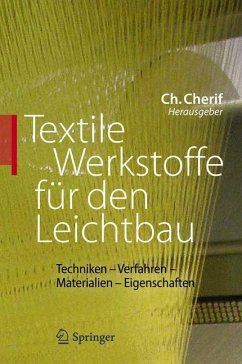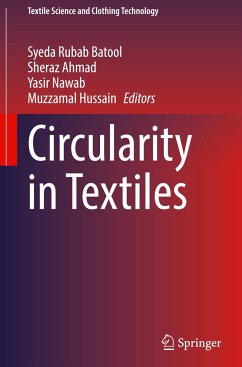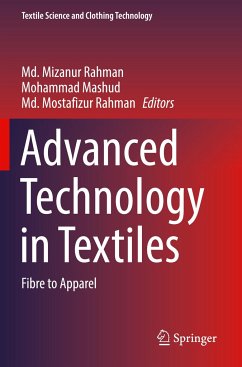
Quality Assessment of Textiles
Damage Detection by Microscopy

PAYBACK Punkte
19 °P sammeln!
Assessing the quality of textiles using textile microscopy remains one of the important instruments for permanent process improvement in the fiber, textile and apparel industries. The degree of international interlinking in the textile producing and finishing industries and their markets demands dearly defined and reproducible methods of detecting damage or defects at all process stages. This book -Quality Assessment of Textiles -Damage Detection by Microsco py - has in the meantime established itself so well as "the Mahall" in research institute laboratories investigating defects, in universi...
Assessing the quality of textiles using textile microscopy remains one of the important instruments for permanent process improvement in the fiber, textile and apparel industries. The degree of international interlinking in the textile producing and finishing industries and their markets demands dearly defined and reproducible methods of detecting damage or defects at all process stages. This book -Quality Assessment of Textiles -Damage Detection by Microsco py - has in the meantime established itself so well as "the Mahall" in research institute laboratories investigating defects, in universities and colleges, in the training of textile chemists and technologists, and in the industry and the retail trade, that it has become necessary to bring out a new edition. This edition has been revised and supplemented by Mr. Mahall and his succes sor Ms. Irmhild Goebel and her staff. Cognis, as the successor organization continuing the textile business of the for mer Textile Technology department of Henkel, is pleased to make this new edi tion available to specialists, to students and to any other interested readers. June 2002 Dr. U. Kloubert (Cognis Deutschland GmbH & Co. KG) Prof E. Finnimore (Fachhochschule Hof, Germany) Foreword to the First Edition Quality is the decisive criterion by which textile industry is measured in the international competition. Today this is particularly true.












